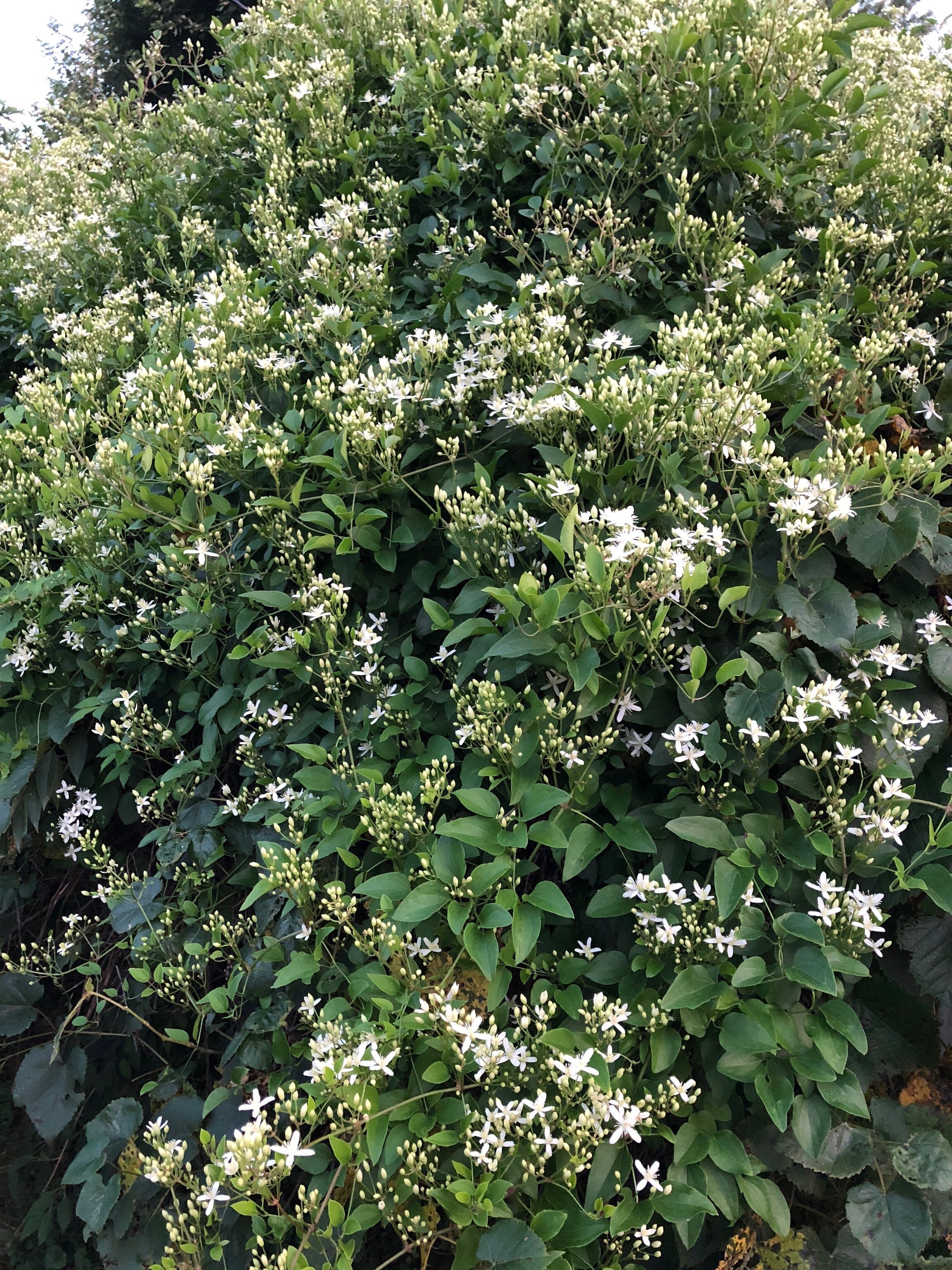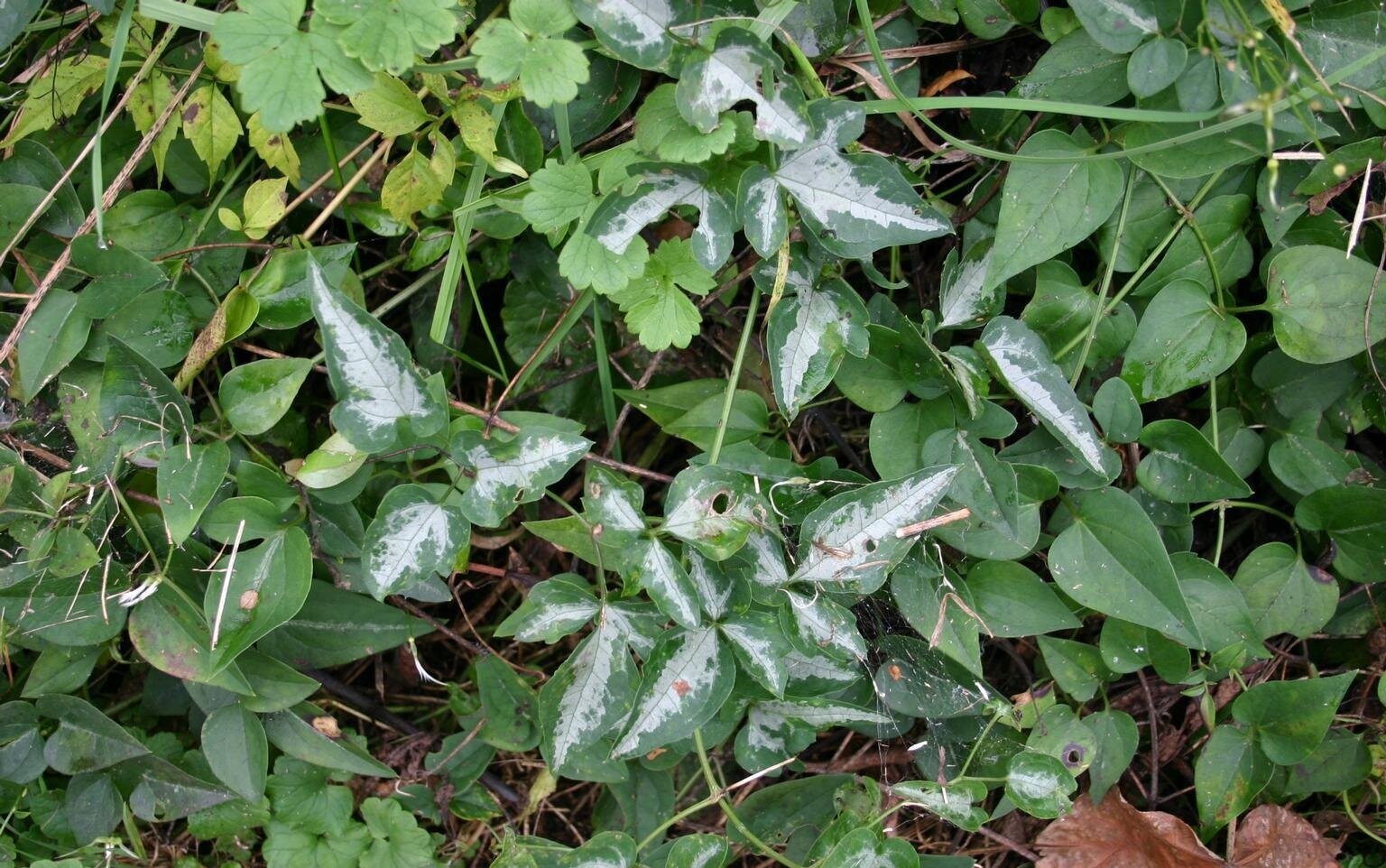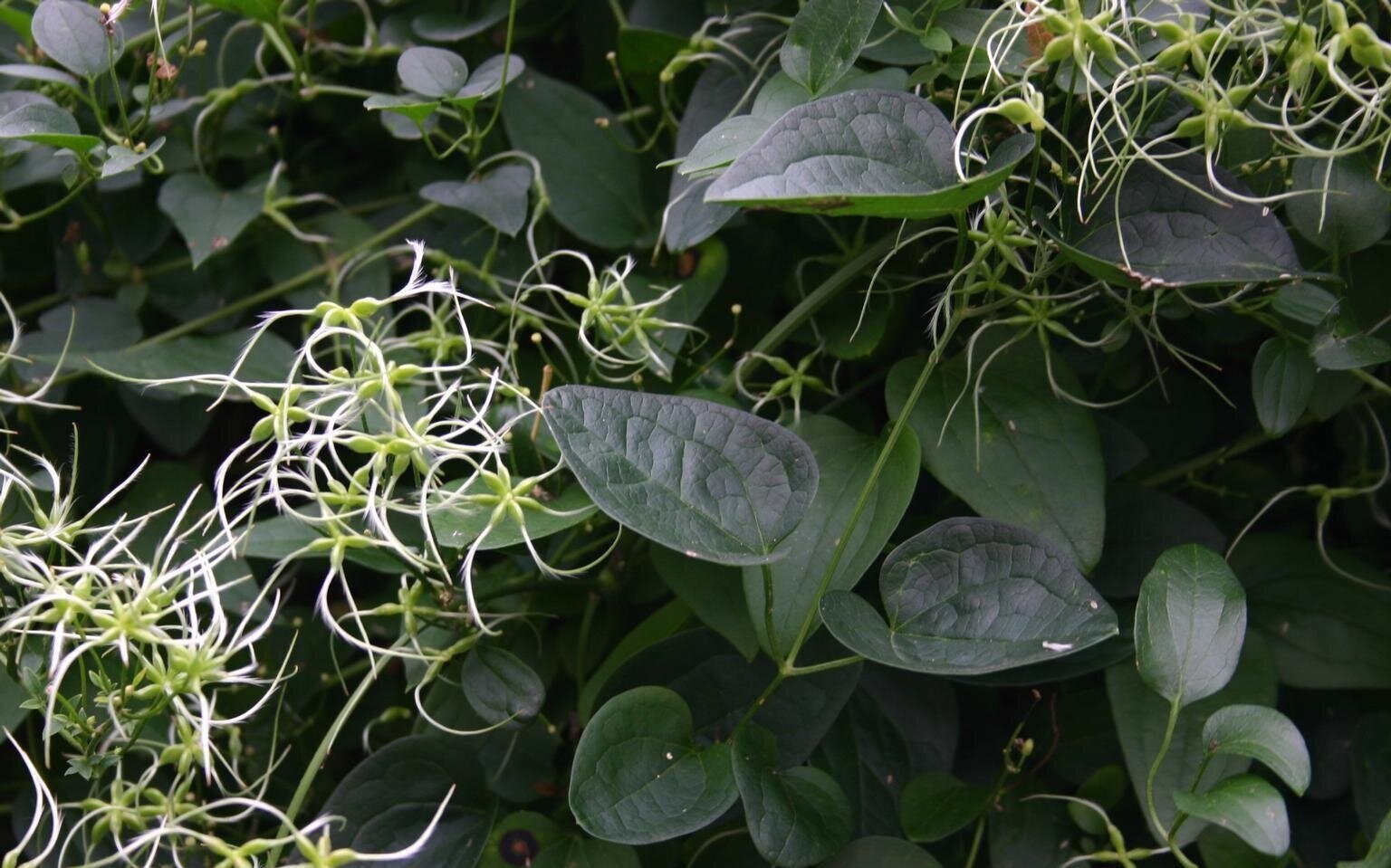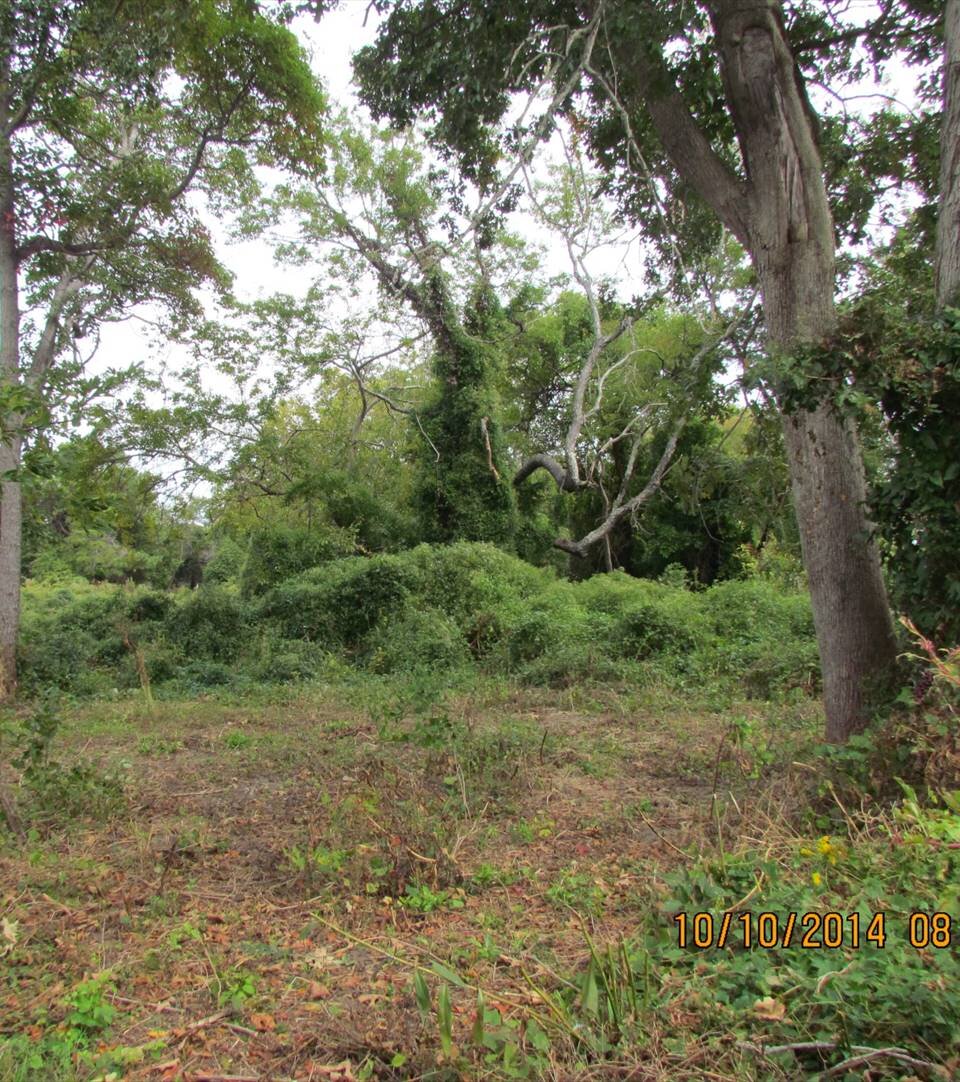September Invasive Plant of the Month
SICIM Email
Sweet autumn clematis (Clematis terniflora)
Sweet autumn clematis is a twining vine native to Japan and China, introduced to US as an ornamental. It blooms August to September, producing numerous fragrant white flowers. It has an extremely aggressive growth habit and can rapidly climb woody plants and/or structures to 25 to 30 feet. It forms dense tangled masses that can cover the ground and other vegetation. Sweet autumn clematis grows best in full sun to part shade, tolerates full shade, and is adaptable to a variety of soil conditions. The profuse flowers produce seed heads with wispy spirals of wind dispersed seeds. It can aggressively self-seed and has escaped cultivation in many parts of the U.S. This species is ranked as invasive in Indiana but has not been added to the Indiana Terrestrial Plant Rule at this time.
IDENTIFICATION & BIOLOGY: Sweet autumn clematis is a perennial vine in the buttercup (Ranunculaceae) family. Young stems are smooth and green while older stems are brownish-green to brown. It has oppositely arranged compound leaves with 3 to 5 leaflets, each with a petiolule (leaflet stem) of varying length at its base. While there are no tendrils, the long leaf petioles can wrap around objects or other vegetation to support the vine as it climbs. Leaflets are ovate to cordate, up to 3 inches long, and as wide as 1.5 inches. Leaf margins are smooth, and occasionally lobed. Upper leaf surfaces are green and smooth, lower surfaces are dull light green and the major veins run parallel.
Flat panicles of fragrant flowers form along the upper leaf axils. Flowers are bisexual and each flower as 4 petal-like sepals, many long stamens, and 5-6 pistils. All parts of the flower are white or cream-colored, and there are no true petals. Sweet autumn clematis blooms in late summer into fall. Flowers ripen into clusters of flat oval shaped achenes with long spreading styles. The seed styles are covered in long feathery hairs, enabling wind dispersal.
LOOK-A-LIKES: Our native virgin’s bower (Clematis virginiana) is frequent in Indiana. Unlike Sweet autumn clematis, virgin’s bower, has toothed leaf margins that are shallowly cleft and dentate. In addition, virgin’s bower styles are smooth instead of feathery like Sweet autumn clematis. Some of our other native clematis species have smooth leaf margins, but the flowers are purplish to pink in color, variously vase shaped, and nodding.
HABITAT & DISTRIBUTION: This invasive species adapts to a wide range of conditions and spreads aggressively in open areas, as well as woodland edges, thickets, fence rows, along railroads, roadway and wasteland. The spread of Sweet autumn clematis is likely underreported and widely spread throughout Indiana, the greater Midwest, and Eastern U.S. It has been reported as far west as Oklahoma.
ECOLOGICAL THREAT: This invasive vine has an increasingly wide distribution, is able to grow in a variety of soils, tolerates a variety of light and moisture conditions, and forms dense mats that smother herbaceous plants, small shrubs, and small to medium sized trees. It readily outcompetes native plants, interrupts native food webs, and reduces wildlife biodiversity. Sweet autumn clematis is considered highly invasive and should be eradicated from landscape plantings and controlled in disturbed sites and natural area settings.
CONTROL:
Prevention – In order to limit the spread, it is essential to halt the use of Sweet autumn clematis as an ornamental landscape plant and remove it from any existing intentional plantings.
Manual – Digging up roots of single vines is possible, but discouraged for large infestations since soil disturbance may encourage spread. Any stem or root material left behind will give rise to continued growth, and as such, hand pulling, cutting, and mowing is not an effective means of control.
Chemical – Treatment with systemic herbicides such as glyphosate (non-selective) or triclopyr (broadleaf specific) has been shown to be effective as a foliar spray.
IMPORTANT: The pesticide label is the law! When using any chemical control, always read the entire pesticide label carefully, follow all mixing and application instructions and use all personal protective gear and clothing specified. Contact county level Purdue Extension or Office of Indiana State Chemist (OISC) for additional pesticide use requirements, restrictions or recommendations.
Maintenance - Initial control efforts should be monitored regularly over the course of multiple years such that continued chemical and/or manual control of persistent or new infestations may be required.
SWEET AUTUMN CLEMATIS REFERENCES & OTHER RESOURCES:
https://www.illinoiswildflowers.info/weeds/plants/aut_clematis.htm
http://www.missouribotanicalgarden.org/PlantFinder/PlantFinderDetails.aspx?kempercode=a300
LOOK-A-LIKE REFERENCES:





